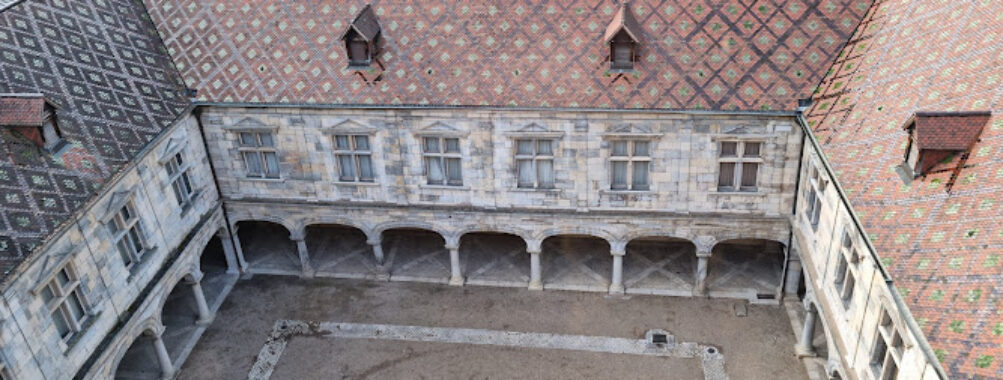
Museum Of Times
Table of Contents
Description
The Museum of Times is the kind of place that sneaks up on you. At first glance, it’s a history museum dedicated to clocks and watchmaking, but once inside, it feels like stepping into a storybook of craftsmanship, patience, and human ingenuity. Housed in a former palace, the building itself is worth the visit—ornate halls, sweeping staircases, and those high ceilings that make you instinctively look up and pause for a moment. And then there’s the view. From the windows and terraces, you get sweeping scenes of the city below, the kind of panorama that makes you linger longer than you planned.
The museum does a wonderful job of balancing the technical side of horology (that’s the fancy word for the study of timekeeping) with storytelling. You don’t need to be a watch collector or a clock enthusiast to appreciate it—though if you are, you’ll probably lose track of time here, no pun intended. Exhibits showcase the evolution of local watchmaking, from delicate pocket watches to towering grandfather clocks, and even some quirky experimental designs that make you realize how creative people have always been when it comes to marking the passage of time.
Of course, not everything is perfect. Some displays feel a bit dated, and there are sections where you might wish for more interactive elements, especially if you’re traveling with kids who need a bit more hands-on fun. But overall, the museum leaves most visitors impressed, curious, and maybe even a little nostalgic. It’s one of those places that manages to combine history, artistry, and a sense of place in a way that feels genuine rather than gimmicky.
Key Features
- Located in a former palace with elegant architecture and scenic city views
- Extensive collection of clocks, watches, and timekeeping devices spanning centuries
- Wheelchair accessible entrance, parking lot, and restrooms
- Family-friendly environment, good for children curious about history and science
- Restroom facilities available on-site (though no restaurant inside)
- Combination of historical storytelling and technical craftsmanship displays
- Quiet, reflective atmosphere ideal for travelers who enjoy slower-paced cultural stops
Best Time to Visit
Timing your visit (pun intended again, sorry) can really change the experience. Weekday mornings are generally the calmest, which means you can wander through the galleries without feeling rushed. If you’re the type who likes to take your time reading every placard and studying every detail, this is the sweet spot. Afternoons, especially on weekends, tend to draw more families and tour groups, so expect a bit more chatter and movement.
Seasonally, spring and autumn are fantastic because not only is the museum enjoyable, but the views from the palace windows are enhanced by the changing colors of the city outside. Winter has its charm too—there’s something cozy about being surrounded by ticking clocks while it’s chilly outdoors. Summer can be busier, as it aligns with peak tourist season, but if you don’t mind the crowds, it’s still worth it.
How to Get There
Reaching the Museum of Times isn’t complicated, but it does depend on your travel style. If you’re staying in the city center, it’s a short ride by public transport—usually a bus or tram will get you close enough, and from there, it’s a brief walk. Taxis or rideshares are convenient too, especially if you’re traveling with kids or anyone who might not want to navigate public transit.
For those who enjoy walking, the route to the museum can be part of the adventure. The palace sits slightly elevated, so the walk involves a bit of an uphill climb, but the reward is that sweeping city view once you arrive. If you’re driving, there’s accessible parking available, though spaces can fill up quickly during busy hours. Personally, I’d say skip the car if you can—it’s just less hassle.
Tips for Visiting
First tip: don’t rush. This isn’t the kind of museum you sprint through in 30 minutes. Give yourself at least two hours, maybe more if you’re the type who loves to linger. The details in the craftsmanship are what make the experience shine, and you’ll miss that if you’re clock-watching (I promise that’s the last pun).
If you’re traveling with kids, prepare them ahead of time. While the museum is child-friendly, it doesn’t have a ton of interactive exhibits. A little pre-visit pep talk about spotting the “weirdest” or “fanciest” clock can keep them engaged. And for accessibility, the museum does a solid job—ramps, elevators, and accessible restrooms are all in place, which makes it easier for everyone to enjoy.
Another piece of advice: bring a snack or plan a meal before or after your visit. There’s no restaurant on-site, which can be a bit inconvenient, especially if you’re traveling with hungry little ones. On the plus side, the surrounding area does have plenty of cafes and eateries, so you won’t go hungry for long.
Photography is generally allowed, but be respectful—flash can be damaging to delicate exhibits. Plus, sometimes it’s better just to soak in the moment rather than trying to capture it perfectly on your phone. And if you’re anything like me, you’ll find yourself getting unexpectedly lost in the ticking rhythm of the place, which is kind of the point.
Lastly, don’t underestimate the gift shop. Yes, it’s easy to roll your eyes at museum gift shops, but here you’ll find some unique time-themed souvenirs—things you won’t find in the usual tourist traps. I picked up a quirky little desk clock there once, and every time I glance at it, I’m reminded of that palace view and the quiet hum of history that filled the halls.
Location
Places to Stay Near Museum Of Times
Find and Book a Tour
Explore More Travel Guides
No reviews found! Be the first to review!